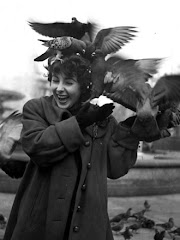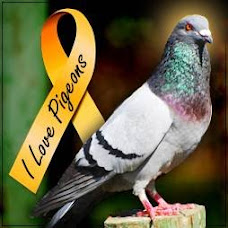Pigeons Show Superior Self-recognition Abilities To Three Year Old Humans
see article in Science Daily
Keio University scientists have shown that pigeons are able to discriminate video images of themselves even with a 5-7 second delay, thus having self-cognitive abilities higher than 3-year-old children who have difficulty recognizing their self-image with only a 2 second delay. (Credit: Image courtesy of Keio University)ScienceDaily (June 14, 2008) — Keio University scientists have shown that pigeons are able to discriminate video images of themselves even with a 5-7 second delay, thus having self-cognitive abilities higher than 3-year-old children who have difficulty recognizing their self-image with only a 2 second delay.
Prof. Shigeru Watanabe of the Graduate School of Human Relations of Keio University and Tsukuba University graduate student Kohji Toda trained pigeons to discriminate real-time self-image using mirrors as well as videotaped self-image, and proved that pigeons can recognize video images that reflect their movements as self-image.
Self-recognition is found in large primates such as chimpanzees, and recent findings show that dolphins and elephants also have such intelligence. Proving that pigeons also have this ability show that such high intelligence as self-recognition can be seen in various animals, and are not limited to primates and dolphins that have large brains.
Experimental method and results
The pigeon was trained to discriminate two types of video images in the following method. First, live video images of the present self (A) and recorded video images of the pigeon that moves differently from the present self (B) are shown. When the pigeon learns to discriminate these two images, the video image of (A) is shown with a temporal delay, so that the monitor shows the image of the pigeon a few seconds before. If the pigeon remembers its own movements, it can recognize it as self-image even with the delay.
The pigeon could discriminate (A) with a few seconds delay as something different from (B). This shows that the pigeon can differentiate the present self-image and the recorded self-image of the past, which means that the pigeon has self-cognitive abilities. Video image (A) matches with the movement of itself, whereas (B) does not. Being able to discriminate the two means that the pigeon understands the difference between movements of itself and movements of the taped image. In this experiment, movements of the pigeon itself are in question instead of the mark of Gallup’s mark test (see 2-(1) below for explanation). When there is a temporal delay in the image of the present self, the longer the delay, the more pigeon’s discrimination was disrupted, and this also shows that the pigeon discriminates the video images using its own movements. The important thing is whether it understands the difference between movements in the video image that match with itself and movements in the video image that don’t.
Method of testing self recognition on animals
(1) Gallup’s mirror test (self-recognition test)
The self-recognition test on animals using mirrors was developed by psychology Prof. Gordon Gallup Jr. at the State University of New York, Albany. His papers released in 1970 in the “Science” magazine explaining that chimpanzees have abilities for self-recognition attracted attention. This test is known as the first to test self-recognition on animals. He anesthetized chimpanzees and then marked their faces. When the chimpanzees were awakened, they were confronted with a mirror and they touched the corresponding marked region of their own faces. Most tests of self-recognition are a variation of the Gallup test, and are used to assess self-recognition in a wide variety of species. It is also called the mark test, or the rouge test.
(2) Assessment of self-recognition on pigeons
Self-recognition can be assessed with cross-modality matching. A typical example of cross-modality matching is waving your hand when you see yourself in a video image. With a mirror image or video image of oneself, when information of the propriocepter (how the arms and legs of oneself are moving) and visual information of oneself correlate, this can be considered self-recognition. The Gallup’s mark test is based on the precondition that the subject can touch itself. Unless the subject touches itself, it cannot be proved that it has abilities for self-recognition. However, the test conducted on pigeons is more advanced, as it is based on how the pigeons move, and by memorizing the shown images, pigeons proved that they have self-cognitive abilities.
Self-cognitive abilities tested in pigeons are higher than that of 3-year olds
Through various experiments, it is known that pigeons have great visual cognitive abilities. For example, a research at Harvard University proved that pigeons could discriminate people photographs from others. At Prof. Shigeru Watanabe’s laboratory, pigeons could discriminate paintings of a certain painter (such as Van Gogh) from another painter (such as Chagall).
Furthermore, pigeons could discriminate other pigeons individually, and also discriminate stimulated pigeons that were given stimulant drugs from none. In this experiment, pigeons could discriminate video images that reflect their movements even with a 5-7 second delay from video images that don’t reflect their movements. This ability is higher than an average 3-year-olds of humans. According to a research by Prof. Hiraki of the University of Tokyo, 3-year-olds have difficulty recognizing their self-image with only a 2 second delay.
Subscribe to:
Post Comments (Atom)












No comments:
Post a Comment